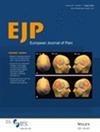The present study sought to determine the prevalence of chronic non-cancer pain (CNCP) among older adult inpatients with polypharmacy. It also aimed to analyse prescription patterns and assess the therapy adequacy and patient complexity for those with and without CNCP.
This 4-year longitudinal study examined data from an exhaustive acute care hospital register on home-dwelling older adult patients (≥65) with polypharmacy. Commonly known combinations of potentially inappropriate medications were used to estimate therapy adequacy. Patient complexity was evaluated by comparing number of comorbidities and investigating physical and cognitive deficits.
We determined a prevalence of CNCP of 9.7% among all older adult inpatients with polypharmacy, rising to 11.3% for those aged ≥85. Overall, CNCP patients were prescribed more drugs and had more comorbidities and physical and cognitive deficits than patients without CNCP. Older adult patients with CNCP received more analgesics, greater quantities of opioids, paracetamol and co-analgesics and elevated opioid dosages. Older adult patients with CNCP aged ≥85 received fewer analgesics, opioids, non-steroidal anti-inflammatory drugs and co-analgesics but more paracetamol. Older adult patients with CNCP were prescribed more potentially inappropriate medications involving opioids. In particular, 24.5% received an opioid and a hypnotic (benzodiazepine or Z-drug), and 8.6% received an opioid and a gabapentinoid.
Observed differences in medication use between older adult inpatients with or without CNCP may be relevant for clinical practice. Potentially inadequate co-prescribing (such as hypnotics and opioids) affects a higher proportion of patients with CNCP and may have serious unintended consequences.
This study describes differences in prescription patterns between people with and without chronic non-cancer pain in a large dataset of 20,422 discharges. The differences found may be relevant to clinical practice. In particular, high co-prescribing of opioids and hypnotics may have serious unintended consequences. Greater physical and cognitive deficits may indicate greater patient complexity, and appropriate interventions need to be developed to improve the management of this vulnerable patient group.


